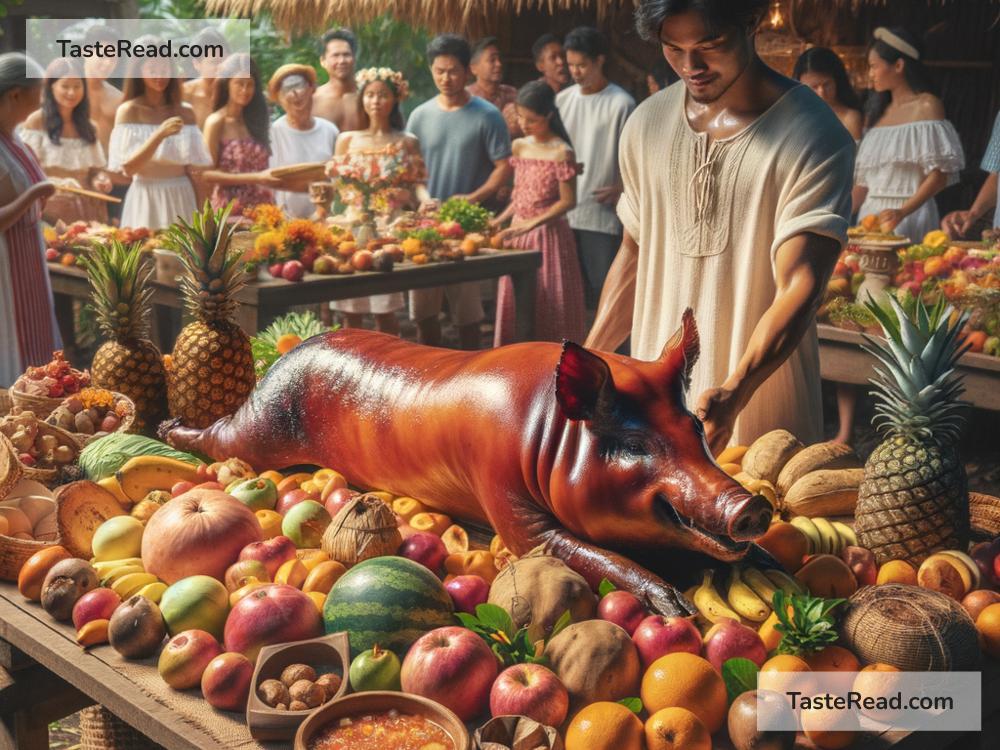Exploring the Story of the Filipino Lechon
Lechon is more than just a dish in the Philippines; it’s a centerpiece of celebration, a treasure trove of flavors, and a testament to the rich Filipino culinary tradition. This blog post will take you through the delicious story of the Filipino lechon, exploring its roots, significance, and why it continues to capture the hearts (and stomachs) of many.
What is Lechon?
First things first, let’s talk about what lechon exactly is. Lechon is a Spanish word meaning “suckling pig”, but in the Philippines, it means so much more. It involves roasting a whole pig over a charcoal pit for several hours. The process is an art in itself, requiring patience, skill, and a deep understanding of flavors. The result? A masterpiece characterized by its crispy, golden skin and tender, flavorful meat that melts in your mouth.
The Roots and Spread of Lechon
Lechon’s journey to the Philippines is an interesting tale. While the concept of roasting pigs can be traced back to pre-colonial times among various cultures, it was during the Spanish colonization in the 1500s that lechon started to weave itself into the fabric of Filipino festivities. The Spanish influence is evident not just in the name but in the technique and prominence of this dish in celebrations.
However, the Filipino lechon has taken on a life of its own, with distinct regional variations across the archipelago. Each region adds its unique twist, be it through the herbs used to stuff the pig, the marinade, or even the dipping sauces. From Luzon to Mindanao, lechon is a culinary expression of the diverse culture and taste preferences within the Philippines.
A Symbol of Celebration and Unity
In the Philippines, lechon is far more than just a meal—it’s a symbol of celebration, togetherness, and abundance. Serving lechon at a party or special event signifies the importance of the occasion. It’s commonly the highlight of birthdays, fiestas, weddings, and even during Christmas and New Year’s Eve celebrations. The presence of a lechon on the table elevates the festive spirit, bringing family and friends together to share in the joy and the feast.
The Mastery Behind Making Lechon
Creating the perfect lechon is considered an art and requires expertise. It begins with selecting the right pig; younger pigs are often chosen for their tender meat. The pig is then meticulously cleaned and prepared with a blend of spices and ingredients that vary by region. Common stuffing includes lemongrass, garlic, onion, and bay leaves, which infuse the meat with aromatic flavors as it cooks.
The roasting process is where the magic happens. The pig is skewered on a large bamboo pole and slowly roasted over charcoal for several hours. This requires constant vigilance and turning to ensure the skin cooks to a perfect crisp while keeping the meat juicy and flavorful. The result is a beautiful, golden-brown exterior that’s both a visual and culinary delight.
The Lechon Experience
Enjoying lechon is a communal experience. The crispy skin, often considered the best part, is typically served first, followed by slices of the succulent meat. Each bite is a burst of flavors, reflecting the marinade, the stuffing, and the smokiness from the charcoal.
Lechon is often accompanied by a liver-based sauce or vinegar dipping sauce, adding another layer of flavor. Steamed rice and a variety of side dishes can also accompany lechon, but often, the lechon itself is the star of the meal, requiring little else to shine on the dining table.
Conclusion
The story of the Filipino lechon is a narrative steeped in history, culture, and culinary excellence. It symbolizes celebration, unites people, and showcases the Filipino spirit through its flavors and traditions. Lechon’s enduring popularity is a testament to its unparalleled taste and the deep-rooted love Filipinos have for this iconic dish. Whether served at a grand family gathering or a simple get-together, lechon remains a cherished part of Filipino culinary heritage, bringing joy and deliciousness to any occasion.


